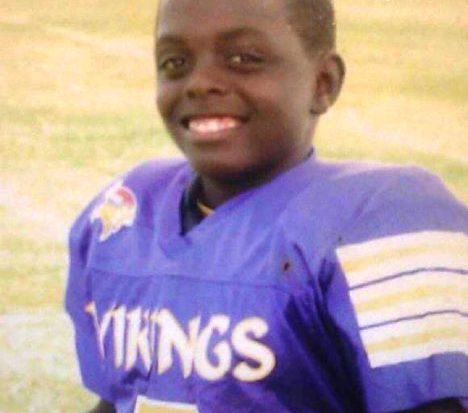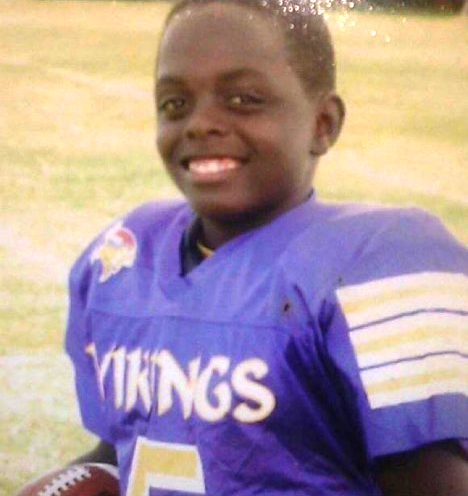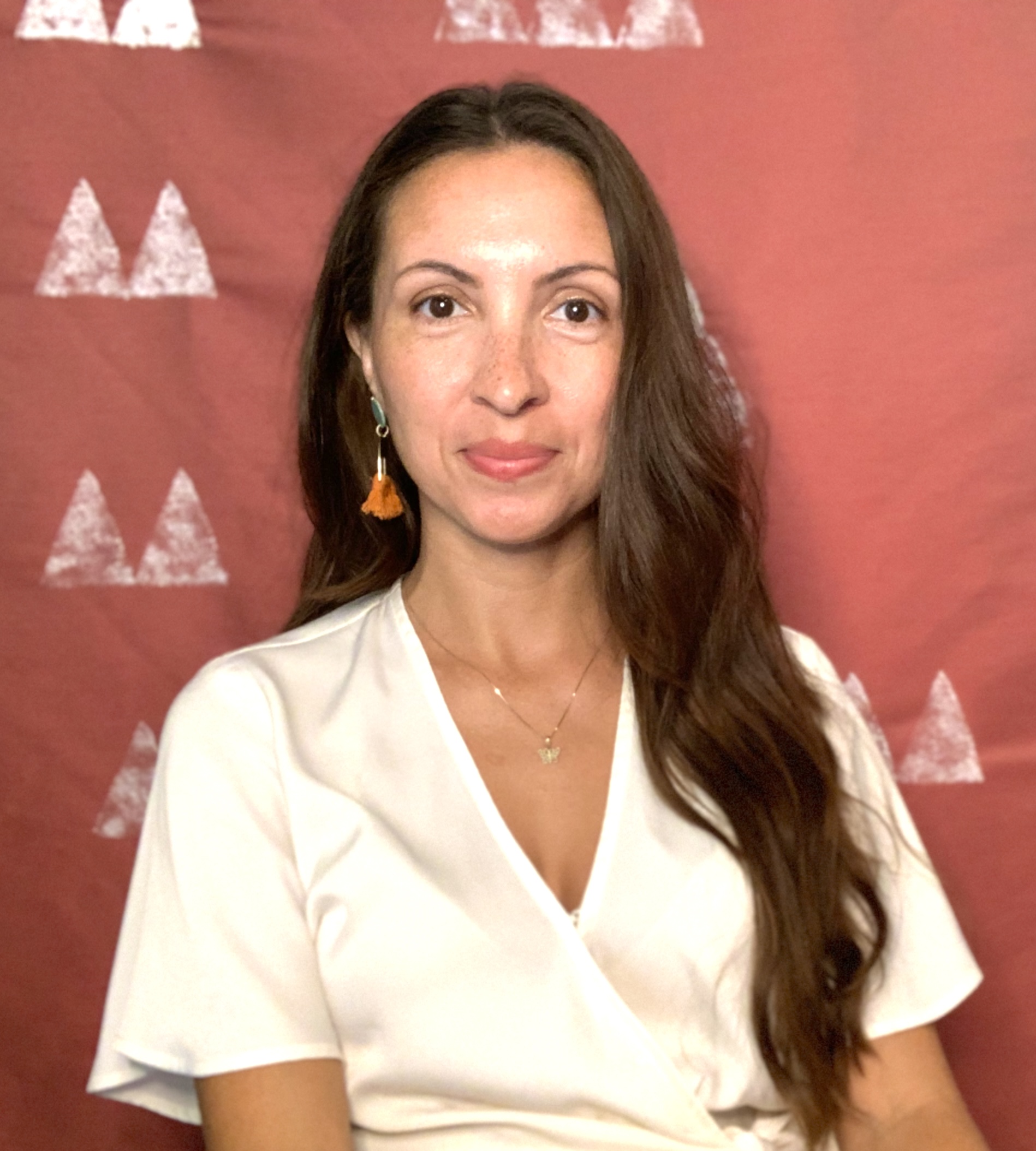

Many of us already know that there are two legal systems just as classical novels have articulated about the economic and political experiences of communities along race and class lines. One U.S. legal system is for the affluent and White and the other is for the poor and BIPOC communities: There are the same legal spaces, roles and procedures, but very different treatment.
This difference along race and class lines is integral to U.S. history and culture. The statistical data show the disproportionality in terms of arrests, incarcerations and sentencing practices in the juvenile and adult legal systems where BIPOC communities are punished more often and to a greater extent than White counterparts for the same crimes, and even non-crimes as we will see in the life experiences of the child, and now young man, named DeAndre Rogers.
For BIPOC children and young adults under 25 years old, adultifying them ensures that they too, no matter the age, can be absorbed into the juvenile and adult legal systems. Adultifying refers to culturally constructing children into adults both legally and conceptually.
The 2017 data from the U.S. Office of Juvenile Justice and Delinquency Prevention outlined in a succinct 2020 report from the Children’s Defense Fund illustrate the frequency with which children are legally framed as appropriate for institutional punishment in the juvenile and adult systems.
For example, 43,580 children are incarcerated in juvenile facilities any day of the week. Unsurprisingly within the White supremacist cultural beliefs that dominate the United States, although 62% of annual arrests of children are White, BIPOC children are 2–2.5 times more frequently deemed appropriate for incarceration in juvenile facilities.
And the most robust example of adultifying some groups of children is that of placing children in the adult system; we will consider this fact specific to DeAndre, whose entanglement with the legal systems represents numerous children and young adults who are relegated to the second legal system.
That is, while 935 children are incarcerated on any given night in an adult institution, according to a 2018 study by Puzzanchera and colleagues, each year in the United States, 76,000 children are processed in the adult system, including in terms of prosecution and/or incarceration.
It is BIPOC and poor children, again, who comprise the majority of those children incarcerated in adult institutions. And, the 935 children incarcerated in adult institutions eventually stop getting counted when they turn 18 years old.
All 50 states have one or more mechanisms allowing for “transferring” and/or “waiving” children into the adult system, including moving children into adult facilities before, during and after legal proceedings. Half of the cases against children are based on personal crimes, whereas the other half of cases involve property, drugs or public disorder.
Children who experience the adult system are typically perceived as belonging to one of two age groups: age 16 and older, about 85% of the children, and under age 16, about 15%. Importantly, as the National Center for Juvenile Justice points out, only half of U.S. states annually report this “transfer” data.
In the California Attorney General’s Office’s 2020 report, data on 45 California children were analyzed from that which was reported to the Department of Justice database. Among the 45 children transferred to the adult court, 71% were found guilty and remained in adult facilities.
Even though California voters in 2016 stopped district attorney powers to automatically decide whether to move children into the adult system, the 2016 change only slowed the flow of children into adult courtrooms and institutions, rather than transforming our cultural definition of who and when a person is a child.
According to the same report, of the 71% of children who were convicted as adults, none are White. Of the Latinx children processed, accounting for 71% of that year’s group of transferred children, 77% were convicted. Of the Black children processed, accounting for 20% of that year’s group of transferred children, 66% were convicted.
A popular culture–based concept of childhood in this country is one where children are supported by adults to develop emotionally and relationally while growing biologically. This concept is reflected in popular media, including television content, movies and commercials intended for child and adult entertainment.
Brain science supports this concept of childhood, illustrating that brain development in teen years is the most opportunistic time and a highly vulnerable period in that the brain is so adaptable to inputs that wellness or trauma will guide ongoing brain development. In fact, for more than a decade, research on rats, humans and computational models illustrates that around 25 years of age, the brain reaches its ability to finally quickly assess patterns and risks.
The entertainment content and brain science research encourage us to see children as children, but this is not applied to children who live in poor neighborhoods and carry BIPOC heritages.
Instead, research that examines news media imagery, as well as implicit bias studies, show us another popular concept of childhood that limits the conceptual age for BIPOC children. The sensationalizing of BIPOC children’s assumed criminality is, in actuality, the framework for adultifying BIPOC children.
Adultifying BIPOC children is another avenue to exercise the U.S. cultural fixation on punishment and preoccupation with colonizing BIPOC communities.
As with all children, BIPOC children and those from poor neighborhoods make mistakes and fall short of the expectations handed down from parents, teachers and society. Unlike affluent and White children who are most often framed as having lengthy childhoods, BIPOC families cannot maintain the status of our children as children. This speaks to the power of culture; culture wins every time.
Entertainment content and brain science research is not for our BIPOC communities; that is, children with White bodies are framed as rightly placed in protective privileges, and fixations with punishment are implemented on those bodies framed as less valuable.
There are legal cases where White children are able to maintain their child status during juvenile and adult court proceedings, even beyond the legal benchmark of 18 years of age. Their cognitive behavior development is leveraged to explain the reasoning behind a “lighter” sentence that incorporates their youthfulness.
This is rarely the case for BIPOC children and those from poor neighborhoods. The area of research called “pipeline to prison” is dedicated to this issue, demystifying how it comes to be that primarily BIPOC children are consumed by the legal system where affluent and White children are not.
For Black youth such as DeAndre, they are prioritized for arrest, conviction and incarceration by the juvenile and adult systems from a young age; their youthfulness and emerging biological development are rarely allowed to be included in court proceedings.
As a teen, DeAndre’s tall, strong and dark-skinned traits were used by officers at the Sacramento County Youth Detention Facility (YDF) to adultify him, moving this teenager from a juvenile detention facility to a youth prison before the juvenile court made a ruling on his case.
At that time, DeAndre was sent to the California Department of Juvenile Justice, formerly the Youth Authority (YA), based on the claim that the YDF staff were “fearful” of him. The fear was not based on DeAndre’s behaviors, solely the perceived danger he posed that lines up succinctly with unconscious bias research where darker skin tones are linked culturally to danger, criminality and other traits, all of which are to devalue darker-skinned humans in a White supremacist culture.
After DeAndre’s case was complete and heard by the court, it was overturned by the California Appellate Court (CAC). The CAC determined that the case against DeAndre did not make him eligible for a YA prison sentence. He was released immediately, but the trauma of incarceration, well-established in incarceration research, was already set in motion as the brain science discussed above shows.
The movement of BIPOC children from neighborhoods and into institutions, from juvenile to adult facilities, is the second legal system that fulfills the cultural desire to punish and colonize BIPOC communities.
What further illuminated DeAndre’s experience with being adultified is that the adultifying did not start during his teen years. At 11 years old, DeAndre experienced his first arrest and incarceration.
He was fighting with another boy his age at a swimming pool and when the police arrived, his peer said that DeAndre stole two dollars from him. Even though no money was found on him, DeAndre was arrested by Sacramento police and booked into the YDF where he remained for two weeks.
Upon release, three months of juvenile court hearings followed for the 11-year-old DeAndre to navigate with his mother. Ultimately, the other child recanted the two dollars claim, the juvenile court ended all further hearings and DeAndre had his first adjudication on his record.
BIPOC 11-year-olds such as DeAndre all too often face repeated barriers to being viewed as children and, like the two-week incarceration for DeAndre, their “priors” are weaponized by juvenile and adult courts as proof of adulthood and criminality.
This “priors” feature of adultifying children also shows up in DeAndre’s navigation of the second legal system. Today, he is serving a 25-to-life sentence in Salinas Valley for possession of a firearm that he displayed in a music video and then was confiscated from his car.
That is, in 2018, when he was 23 years old, DeAndre was intentionally tracked and arrested after leaving a sushi dinner with friends. The music video was used as a reason for this arrest though no violent crime occurred. From his entanglement in the pipeline to prison, DeAndre was prosecuted for this gun possession as a third strike.
When we see successfully argued cases that involve children and young adults, cases that lean on cognitive behavior development and youthfulness, these are rarely involving BIPOC and poor children.
In the case that sentenced DeAndre to 25 years to life, there was no consideration of the incarceration of him at the YDF at 11 years old or the YA incarceration of him.
There was certainly no consideration that at six years old, DeAndre was the victim of gun violence. Two men came through a window as he watched The Nutty Professor with his mother. The men grabbed his mother off the floor by her hair, demanded she give them money and pistol-whipped her. When they fled, the men robbed another apartment, but this time they also committed a homicide.
The traumatic event that DeAndre witnessed inspired in him a deep need to protect his family and home. Possession of a gun as a 23-year-old is linked to this desire for protection. As one of his lyrics reads, “I watched them pistol whip my mama, it made me turn out to the streets.”
Over the years, the post-traumatic stress for DeAndre, and the cumulative impact of the pipeline to prison, was not taken into consideration by Sacramento County Probation or the juvenile system. Even though his mother requested many times for some type of support, the services made available were solely probation.
The second legal system, that for children from BIPOC communities and poor neighborhoods, is not designed to consider trauma or to treat BIPOC children as children. In the second legal system, the cultural fixation with punishment and colonizing materializes as the cultural construction of BIPOC and poor children as adults.
Our BIPOC children become educational tools to the affluent and White communities about the power of culture. The saying that culture wins every time is palpable to our BIPOC communities; this is not an educational moment for our families.
In stark construct to a nonviolent crime like DeAndre’s, mixed with our U.S. culture’s proclivities to champion racism through the legal systems, many of us are aware of the 2021 shooting murder by Kyle Rittenhouse.
When a child is perceived as a child in the legal system, formally or informally, this means their age is a contributing factor in deciding a pathway to address their crime. The trend of seeing White and/or affluent children as children is important for us to point to in order to see the impact of cultural concepts of childhood as applied to the privileged.
The legal systems literally champion the youthfulness of privileged children, affording them the protection of the legal and conceptual labeling of child and youthful.
We could look to some U.S. states such as Massachusetts and Western countries such as the Netherlands that are experimenting with legally treating children as children until well after the benchmarks that are used in much of the United States.
For example, in 2014, the Netherlands instituted a law that, under some conditions, those up to the age of 23 can be processed in the juvenile system. This example, however, does not provide solutions for seeing all children as legally and conceptually children.
The cultural beliefs that we have inherited, centrally racism and classism for this discussion of the adultifying of BIPOC and poor children, will remain powerful enforcers for the removal of childhoods from our BIPOC children.
Full constitutional rights are not afforded to children. Principally for this discussion, children are prevented from protective actions that rightly limit the government’s approaches to seeking the conviction of a person.
The United States has a long and adversarial history of intentionally keeping groups of people from accessing certain rights, including those who identify as BIPOC, women, people with conviction histories and children.
Keeping children from accessing constitutional rights increases their vulnerability and wraps them in a system that incubates racial and income inequalities. While there are arguments against treating children with the same rights and procedures as adults in the adult system, it is noteworthy that our society legally and conceptually refuses to treat children as children even with this denial of access to adult rights.
There are many DeAndres out there being consumed by the U.S. legal systems that perpetuate the generational harm that racism and classism ensure. The visceral harm enacted on numerous children by adultifying them for punishment purposes, their families and communities is beyond words.
There’s an adage that describes the torment parents experience when their children are harmed, and that is “you’re only as happy as your saddest child.”

